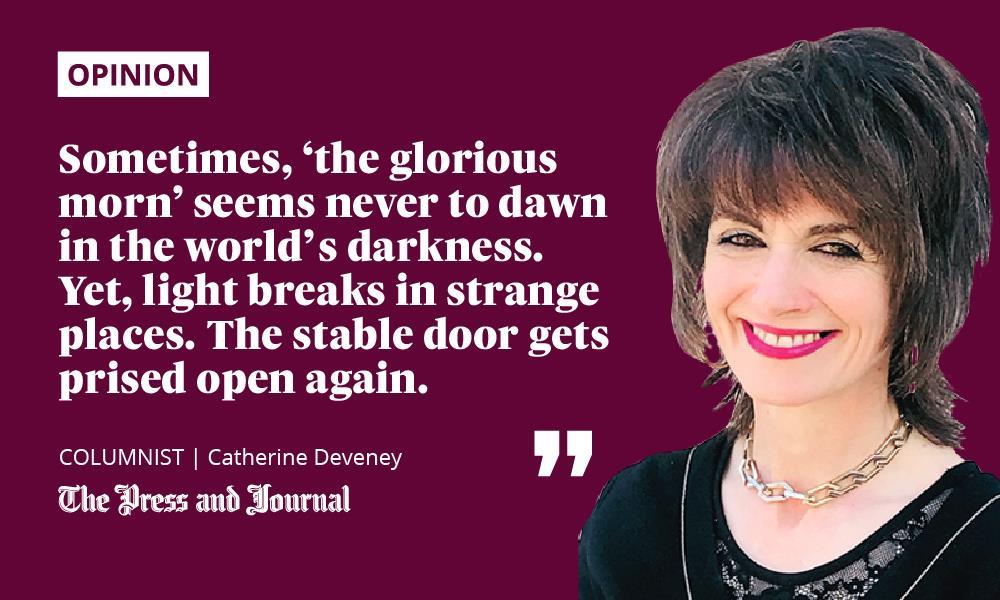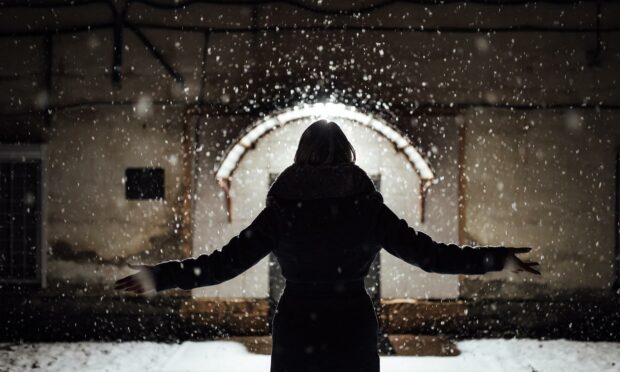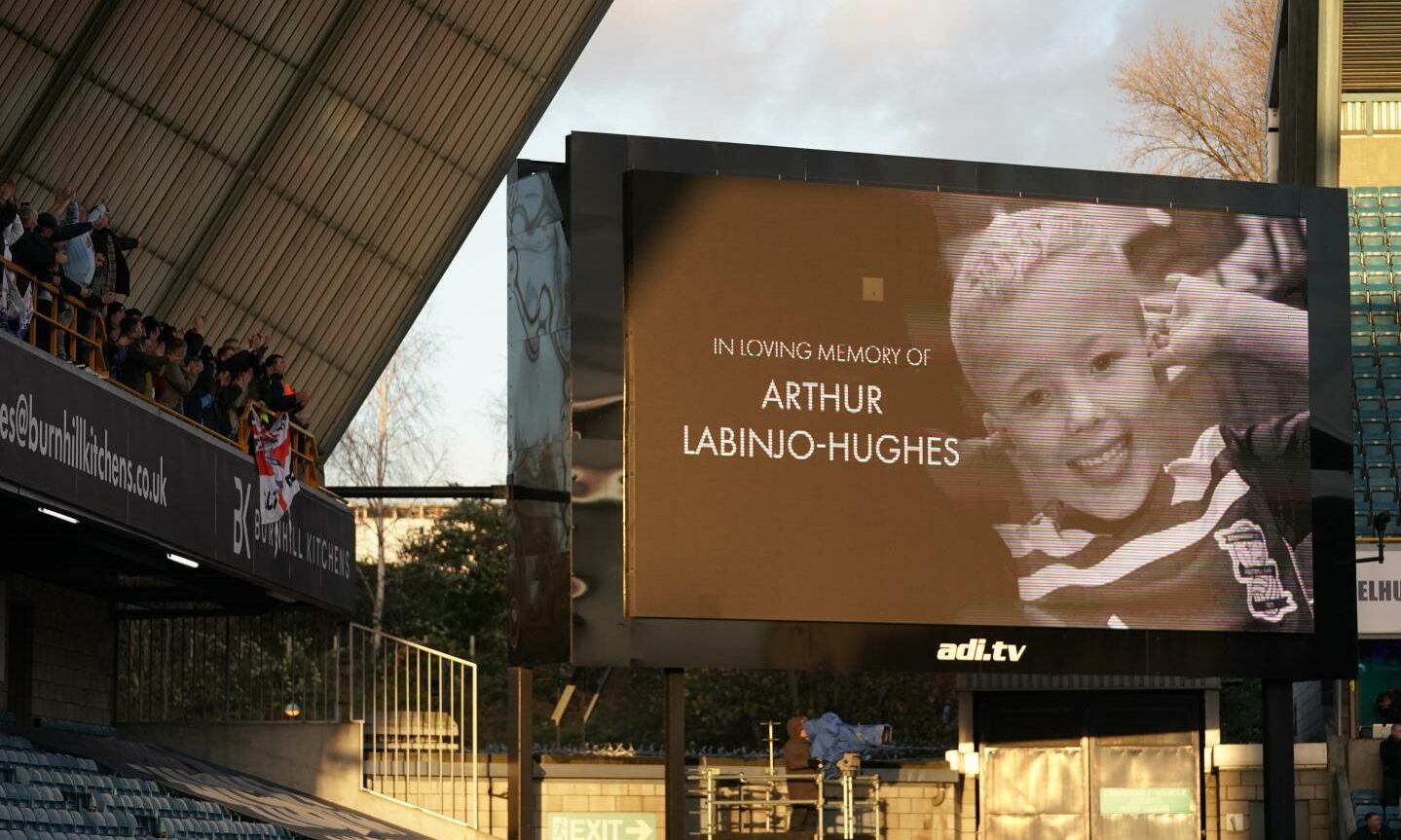A thrill of hope the weary world rejoices,
For yonder breaks a new and glorious morn
There is a part of Christmas Eve forever trapped in the glass bauble of childhood. For me, the magic is captured in a sound, the rustle of a net stocking waking me from deep sleep as my foot kicks it. That, and the feeling of holding my father’s hand that magical year when snowflakes suddenly swirled in the night sky, falling gently on my upturned face en route to midnight mass. Oh, holy night.

Nostalgia is part of Christmas, and the adult world holds the unspoken secret from children that, beneath the joy, there is a layer of sadness about things and people lost. The “perfect” Christmas does not exist. And, yet, how wonderful the imperfect one can be when that “thrill of hope” is embraced.
Christmas carol O Holy Night was translated from a French poem – Minuit, Chrétiens (Midnight, Christians) – which was written around 1843 by a wine merchant and poet, Placide Cappeau.
Cappeau had largely rejected the church, and I love O Holy Night for that because, like Thomas Hardy’s The Oxen, it embraces something even more fundamental in mankind than faith: a searching; a longing for something bigger; and, above all, an inner hope that even an absence of faith does not fully extinguish.
During the darkest moments, light breaks in strange places
There is much in our past year to dent optimism. Continuing Covid, of course, the sudden imposition of a new, unwelcome life, and a grief for those lost along the way.
Sometimes, it feels as if the world is, indeed, “weary”. Lost, even. As Christmas approaches, we think inevitably of children and, in the last few weeks, the tragedies of Arthur Labinjo-Hughes, and Star Hobson, and four little boys left alone to die in a house blaze blight festivities.
Unsurprisingly, the religious aspect of Christmas has become of increasingly less comfort to people. The scandals and abuses that have rocked all churches have caused the stable door to blow shut for many.
The fanaticism of belief, its ruthless cruelty, have tainted faiths of every kind. News emerged this week of a “sacrilegious act” at the Golden Temple in Amritsar, India. A man tried to touch a ceremonial sword but was overpowered by guards and worshippers. And then he was beaten to death by them.
Sometimes, “the glorious morn” seems never to dawn in the world’s darkness. Yet, light breaks in strange places. The stable door gets prised open again.
To counteract Amritsar, there was the kind-hearted Sikh who, earlier this year, saved many Muslims from riots by hiding them in his Delhi home. True faith is not institutionalised.
We have the power to embrace optimism
In Britain, 11 million people tuned in to the final of Strictly, and while John and Johannes were my favourites, who could grudge Rose Ayling-Ellis the trophy? Her dance without sound captured the world of deafness for those who can hear. In her victory, there was a triumph over silence and a lesson: optimism is a choice.
I am a glass half-empty person, prone to darkness. Rose’s positivity was inspirational.
Moments where you saw her sadness – particularly when she switched off the lights in the dance studio for the last time, and recognised the approaching ending – were followed by a smile that acknowledged another beginning would follow. Her delicate fragility, the slender body that looked like it might snap in two, was in sharp contrast to the resilience of her mind.
This is not to say that how we feel is entirely a choice – if only depression, for example, were that simple – but even the NHS’s flagship treatment of CBT recognises the human mind’s ability to embrace new ways of thinking, of being. We have some power.
Christmas carol and rebel song
Cappeau’s poem was put to music by Adolphe Adam, a French composer best known for his ballets and operas, including Giselle. O Holy Night was welcomed, then rejected, by the Catholic church, partly, it was said, because of Cappeau’s irreligious views.
On Christmas Eve I will think of things lost, but will also remind myself that the hope and light of Christmas are options that each of us can embrace
Five years after it was written, revolution erupted in France and Adam described the composition as a “religious Marseillaise”. A 19th century theological magazine subsequently dubbed the song’s popularity “unhealthy”.
It is, then, both traditional Christmas carol and rebel song.
Chains shall he break, for the slave is our brother,
And in his name all oppression shall cease
When it plays, I will think of Cappeau, whose iconic words have inspired generations with hope as much as faith.
And, as the midnight bells ring on Christmas Eve, I will think of things lost, but will also remind myself that the hope and light of Christmas are options that each of us can embrace.
Catherine Deveney is an award-winning investigative journalist, novelist and television presenter

